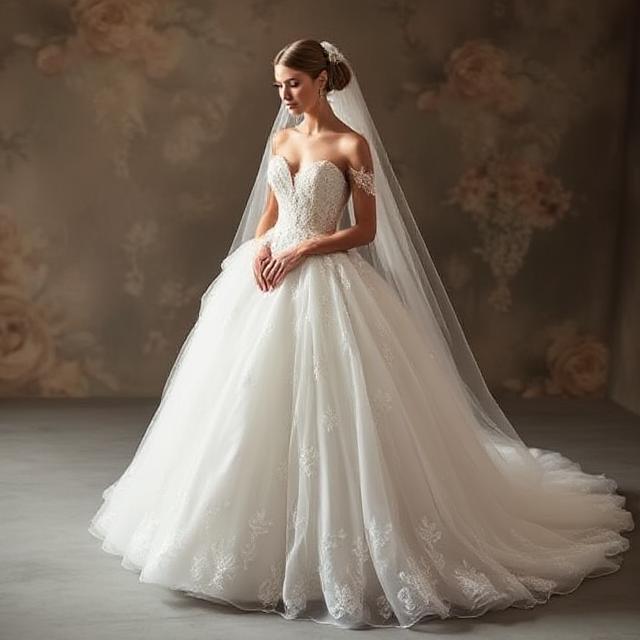When it comes to planning a wedding, few decisions are as personal and emotionally significant as choosing the perfect wedding gown. For brides who wear a size 7, the options are endless, yet the journey to finding the ideal dress can still be filled with questions and uncertainties. Understanding fabric, silhouette, body shape, and seasonal trends can make all the difference in how you feel on your big day. This comprehensive guide delves deep into the world of size 7 wedding dresses—designed to empower every bride with knowledge, confidence, and clarity. Whether you’re a traditionalist dreaming of lace or a modern minimalist with a flair for clean lines, this guide will walk you through every step of the decision-making process. From body-enhancing fits to style tips that bring out your natural beauty, here are the top seven things you need to know before saying yes to the dress.
1. Understanding What Size 7 Really Means
Many brides mistakenly assume that a size 7 in bridal wear will match their usual streetwear size. Unfortunately, bridal sizing follows a completely different chart. In many designer lines, a size 7 is a hybrid or “in-between” size, often falling between standard bridal sizes 6 and 8. This is important to keep in mind because bridal gowns are rarely ready-to-wear. Almost every dress will require some level of alteration. If you’re typically a size 7 in everyday clothes, you’ll likely need to try on a few different bridal sizes to find what fits best. It’s always smart to bring along a tailor’s tape and know your exact bust, waist, and hip measurements before heading to the bridal boutique. This will help you avoid disappointment and narrow down your options more efficiently. Knowing your body’s proportions and where you carry weight can also help determine which silhouettes will suit you best. A great consultant will take your body measurements and guide you toward the most flattering fit, rather than fixating on a number. Always prioritize fit and feel over label size—because on your wedding day, comfort and confidence are what truly matter.
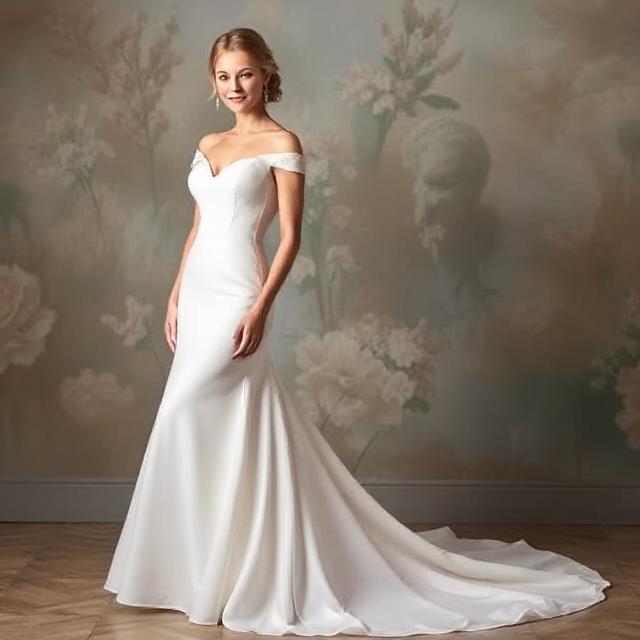
2. Choosing the Right Silhouette for Your Body Type
The silhouette of a wedding dress is one of the most important decisions you’ll make. For size 7 brides, versatility is on your side—you’re in a sweet spot that accommodates many styles. The ball gown, with its voluminous skirt and cinched waist, adds drama and works well for brides with narrow hips or those wanting a fairy-tale look. A-line dresses flatter nearly every figure, skimming gently over the hips while offering enough structure to highlight the waist. If you’re petite, consider a sheath or column dress that elongates your figure and avoids overwhelming your frame. Hourglass figures shine in mermaid or trumpet styles, which hug curves and showcase your shape. If you’re unsure, try multiple silhouettes—even those you think won’t suit you. Sometimes the dress you least expect becomes the one you love. It’s also crucial to consider movement: walk, sit, and dance in the gown to make sure it feels natural. No matter the silhouette, ensure the proportions match your frame and comfort level. A well-chosen silhouette not only enhances your features but also supports your confidence, letting you radiate elegance and poise on your wedding day.
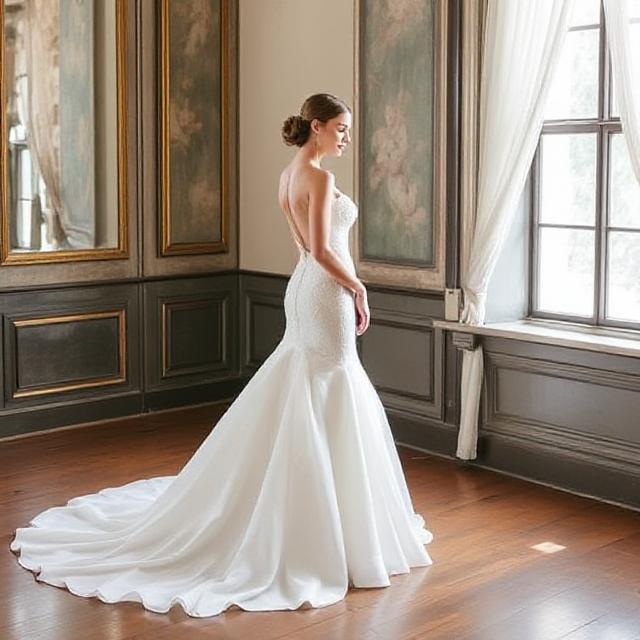
3. Exploring Fabric Options for Size 7 Gowns
Fabric can dramatically change the look and feel of a wedding dress, especially in size 7 where structure and flow matter. Heavier fabrics like satin and mikado offer formality and shape, perfect for cool-season weddings or traditional ceremonies. These materials give the dress a regal look and add weight that can help define your figure. Lighter fabrics like chiffon and tulle provide a romantic, airy effect—great for outdoor or beach weddings where movement and breeze are factors. Lace adds vintage charm and can be layered to create texture without bulk. For brides looking for flexibility and ease of movement, consider jersey or crepe, which cling in all the right places and offer stretch for comfort. Fabric also plays a key role in temperature regulation and how your dress photographs. A matte finish absorbs light and creates a soft appearance, while satin’s sheen reflects light beautifully in photos. When trying on dresses, always ask to feel how the fabric moves and drapes on your body. Run your hands across it. Walk. Sit. Spin. Your connection to the material is just as important as your emotional connection to the gown itself.
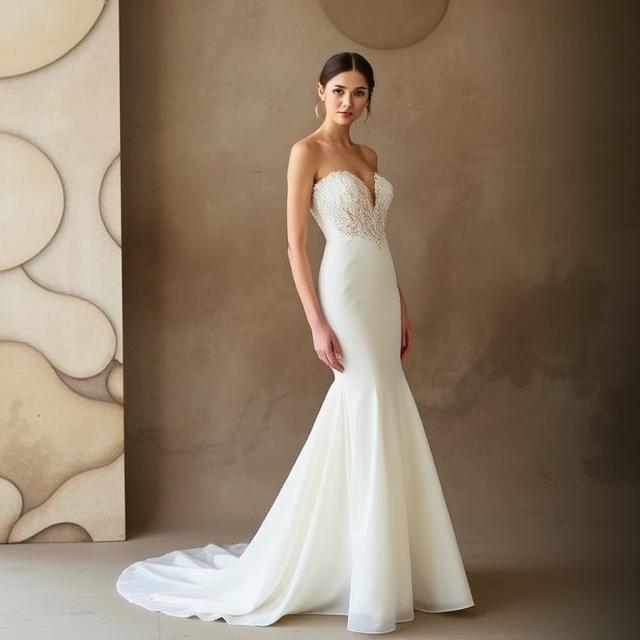
4. Balancing Style and Comfort on Your Big Day
While fashion is key, no wedding gown should come at the cost of comfort. Brides wearing a size 7 are lucky to have balance—enough curve for style, but typically not so much that comfort becomes compromised. However, it’s still essential to prioritize ease of movement and breathability. A dress that feels too tight or restrictive can make walking down the aisle or dancing feel like a chore rather than a joy. Pay attention to internal support features like built-in corsets or bra cups. These can eliminate the need for additional undergarments and allow you to move freely without constant adjustment. Also, consider your ceremony and reception length—can you sit comfortably? Does the gown wrinkle or chafe? Will it hold up after hours of celebration? Think ahead to bustling the train or changing into a second look, if needed. Accessories such as veils, belts, and shoes can add style while also improving comfort. In the end, your gown should feel like a second skin—not a costume. Don’t be afraid to speak up during fittings and ask for adjustments. Your happiness should never come with pinching, slipping, or soreness.
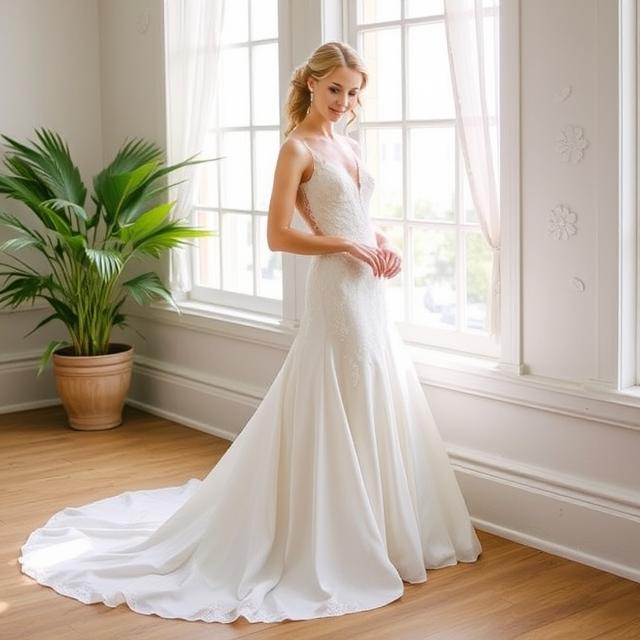
5. Accessorizing a Size 7 Dress to Perfection
The right accessories can elevate your size 7 gown from beautiful to breathtaking. But balance is everything. If your dress is ornate with lots of beading or lace, opt for minimal accessories that don’t compete with the detail. A pair of pearl earrings or a delicate necklace can add just the right touch without overshadowing your gown. On the flip side, if your dress is sleek and simple, use accessories to create visual interest—think dramatic earrings, a bold belt, or a cathedral-length veil. Shoes should be both stylish and practical. Consider heel height in relation to your dress length; bring your wedding shoes to fittings to ensure a perfect hemline. Hair accessories like tiaras, pins, and combs can enhance your hairstyle while tying your whole look together. Don’t forget the bouquet: its size and shape should complement the dress rather than overpower it. When done thoughtfully, accessories not only complete your bridal ensemble but also express your personal style and story. Less is more—but make every piece count. Each accessory should feel intentional and meaningful, contributing to the overall vision of your unforgettable day.
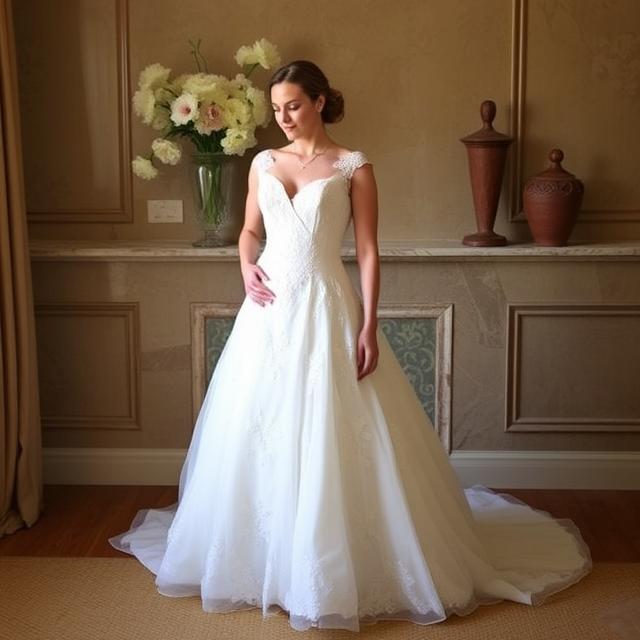
6. Finding the Right Bridal Boutique Experience
Where you shop can be just as important as what you buy. Finding the right bridal boutique plays a huge role in your gown shopping journey. For size 7 brides, this means choosing a boutique that offers a wide size range and consultants who truly understand fit. A high-quality boutique should provide personalized service, private fitting areas, and honest feedback. Before making appointments, read reviews and check whether the store carries the designers you’re interested in. Bring supportive companions, but limit the group to two or three people whose opinions you trust. Too many voices can cloud your judgment. Don’t feel pressured to buy on the first visit—take photos (if allowed), ask questions, and compare notes. Consider how the staff makes you feel: are they attentive, knowledgeable, and respectful of your budget? A good consultant will help you explore options, encourage you to try different silhouettes, and offer advice based on your body shape and preferences. Remember, this is a once-in-a-lifetime experience. Choose a boutique that celebrates your individuality and supports your vision with patience, warmth, and expertise.
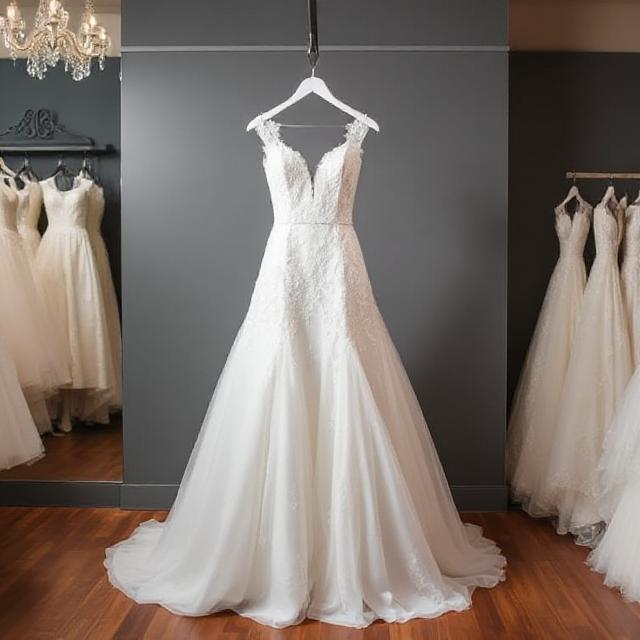
7. Preparing for Fittings and Final Adjustments
Once you’ve chosen your dream dress, the fitting process becomes your next focus. For size 7 brides, tailoring is often minimal but crucial. Even a small adjustment to the bust, hem, or waist can dramatically improve the gown’s overall appearance and feel. Schedule your first fitting 2-3 months before the wedding, allowing enough time for any necessary changes. Bring your wedding shoes, shapewear, and accessories to every fitting to ensure consistency. Be vocal with your seamstress—don’t hesitate to mention areas that feel too tight, loose, or off-balance. Stand, sit, and walk around in the gown to test comfort and functionality. Most brides require 2-3 fittings, so plan accordingly and leave time for a final try-on just before the wedding. Trust your instincts during each fitting—if something doesn’t feel right, say so. A size 7 gown can appear flawless on the hanger, but only precise tailoring will ensure it looks and feels amazing on your body. Don’t rush this part. Your final fitting should feel like the last piece of a beautiful puzzle falling into place, giving you the confidence to walk down the aisle glowing with pride.

Choosing the perfect wedding gown is more than a fashion decision—it’s a deeply personal journey that captures your essence, style, and spirit. For size 7 brides, the possibilities are excitingly vast, yet narrowing them down takes patience, education, and a bit of trial and error. From understanding sizing quirks and silhouettes to choosing the right fabrics, accessories, and boutique, every step brings you closer to the gown of your dreams. It’s not about fitting into a dress; it’s about finding the dress that fits your soul. Let your heart lead, your comfort guide you, and your joy shine through every stitch. When all is said and done, your ideal wedding gown isn’t just the one that fits—it’s the one that makes you feel like the best version of yourself as you step into the next beautiful chapter of your life.


